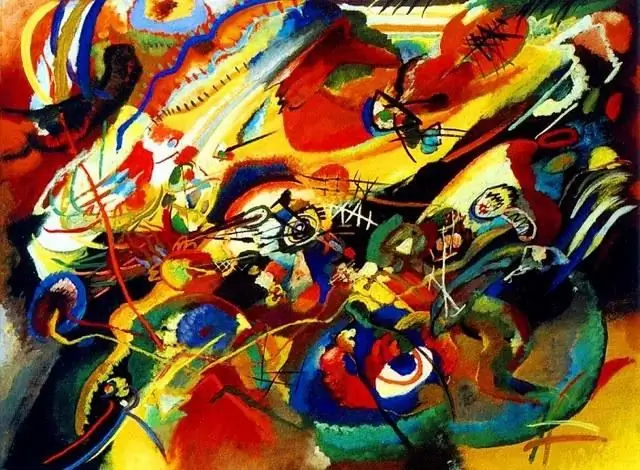2025 Author: Leah Sherlock | [email protected]. Last modified: 2025-01-24 17:46:30
Tempera paints have been known since ancient times. So the artists called the materials prepared on the basis of dry powder pigments and glue binding them to create their immortal works. The adjective "tempera" comes from the Latin word temperare, translated as "to connect, mix."

Features of tempera
What makes tempera paints unique? In the old days, coloring pigments were extracted mainly from minerals, the resulting powder was thoroughly mixed with a sticky substance - egg yolk, the juice of some plants, animal glue or oil. Today, tempera paints are prepared on the basis of synthetic dyes and emulsions. Before oil paints were invented (15th century), tempera was the most popular material for creating frescoes, icons and easel art. The style of such painting is unique and original, which is why artists today do not lose interest in tempera paints.

Egg tempera paint
Tempera paints based on egg emulsioninclude chicken yolk, oil and turpentine varnish. The properties and artistic possibilities of paint depend on the proportion of these substances. For example, excess oil makes the paint look like oil, and excess varnish will make the material applied to the canvas more brittle. In Byzantium and in Russia, egg tempera was widely used in icon painting, in folk crafts, and frescoes were painted on the walls of temples with it. In those distant times, a dry pigment-binding substance was prepared by adding water, kvass, wine or vinegar to chicken yolk. Paints were applied layer by layer, and then covered with drying oil or oil varnish.
Casein and vegetable tempera paints
In addition to the common egg emulsion, tempera was often prepared on the basis of a solution of casein, varnish and oil. Also, tempera paints were made on the basis of vegetable emulsions. For this purpose, gum arabic, a sticky substance made from potato or corn starch (dextrin), or cherry glue were used. Such paints are characterized by weightless tones and stay fresh longer, and therefore they are readily used in factories that produce painting materials.
Modern technologies in the manufacture of paints
New tempera paints are based on artificial pigments and polymers. They are more durable and do not require a varnish coat, as they do not wash off or dissolve with water.
Among the demanded modern means of painting, tempera paints "Master Class" stand out. The series is made from natural and artificial pigments based on polyvinyl acetate dispersion. pastypaint series "Master class" is widely used in painting and design work. Drying, it forms an indelible matte film.

Advantages and disadvantages of tempera paints
How to draw with such material and what subtleties of technique it requires is a topic for a separate discussion. Here we will only touch on the pros and cons of tempera, which has not lost its attractiveness for modern masters. The main advantage of this material is considered beauty and durability. Unlike samples of oil painting, canvases painted in tempera do not change shades, do not turn yellow and do not darken over time. Since tempera paints dry quickly, you don't have to worry that the color layer will change in volume over time, which means that the painting will not peel or crack. At the same time, rapid drying creates certain problems for the artist. Also, the master will have to take into account that when drying, tempera paints change tone - lighten or darken.
Recommended:
Artists of the 20th century. Artists of Russia. Russian artists of the 20th century

Artists of the 20th century are ambiguous and interesting. Their canvases still cause people to ask questions that have not yet been answered. The last century gave world art a lot of ambiguous personalities. And they are all interesting in their own way
Chords: what are they and how to use them?

Beginning musicians often have to deal with the concept of a chord. Thanks to such designs, the development of many tools becomes simple and fast
How to use Spotify in Russia: how to use and review the service

The article is a small overview of the Spotify music service, as well as a description of the possible ways to use the program in Russia
Artists of contemporary painting. Modern artists of Russia

The art of modern painting is works created at the present time or in the recent past. A certain number of years will pass, and these paintings will become part of history. Paintings created in the period from the 60s of the last century to the present day reflect several trends
What are the books and why read them

If the classics of literature heard the question, what kind of books are, they would probably be upset. After all, such questions did not arise before. Books were the only source of new knowledge. They studied with books, they rested with them. Now these functions have been taken over by the Internet in a variety of media. But can he replace books? We will answer this question after we find out what books are in the library. What can we find in them?

